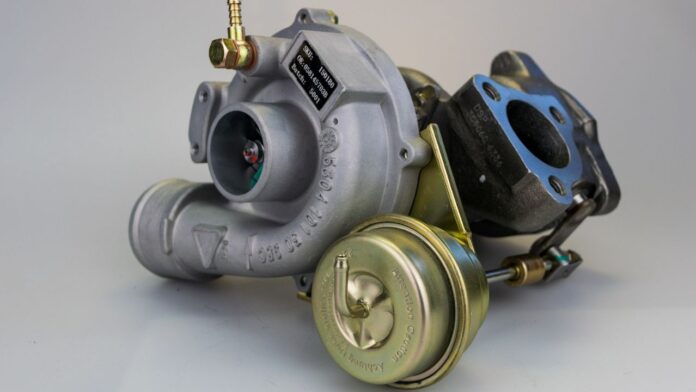Turbochargers have come a long way since they were first invented in the early 20th century. These clever devices use exhaust gases to spin a turbine that compresses air going into the engine. This allows more air into the combustion chamber, meaning more fuel can be burned, increasing power and efficiency.
[PS: Also, consider reading our article on Why You Need An Exhaust System For Your Car]
The Birth of the Turbocharger
The first usable turbocharger patents date back to the 1920s. Engineers originally wanted to improve the performance of large marine diesel engines. The huge engines on ocean liners were ideal candidates for early turbocharger experiments.
It took until the 1950s for the first mass-produced automotive turbochargers to hit the market. The technology was still primitive, but it clearly demonstrated the power benefits on small displacement engines.
Growing Pains in the Early Days
Turbochargers faced some early hurdles before the technology was refined. Reliability issues plagued the first examples, with failed bearings and housings.
Thermal management was also inadequate on these early designs. As exhaust flow spins the turbine rapidly, heat builds up quickly. Without proper thermal protection, the bearings and housings expanded, leading to failures.
An additional challenge was managing the power curve. The early turbo cars were famous for exhibited sudden surges of power. This led to wild, unpredictable driving dynamics.
Steady Improvements in Turbo Technology
Over many decades, turbocharger technology vastly improved. Thanks to computer-aided engineering, the airflow and thermal dynamics inside a turbo could be precisely mapped and optimized.
Exotic materials like ceramic ball bearings, nickel alloy housings, and superalloy turbine wheels also pushed the performance envelope. These advancements allowed turbochargers to safely spin faster and generate higher boost pressures.
Electronic wastegates and blow-off valves also helped tame the abrupt power delivery. These innovations allowed engineers to finely tune the turbocharger output.
The Modern Turbo Era
Thanks to the auto industry’s focus on fuel economy in recent decades, virtually every mainstream manufacturer offers turbocharged engines today. Improvements in manufacturing have also lowered costs over time.
Whether it’s a performance model like a Porsche 911 Turbo or an efficiency play like a Ford EcoBoost motor, most engines benefit from a well-matched turbocharger. There are even efficient twin-turbo setups gaining popularity.
Performance aftermarket companies like banks intercooler also design upgraded turbo systems for added power. With the right supporting mods, it’s possible to double the horsepower of some engines with turbo upgrades.
Air-To-Air vs. Air-To-Water Intercoolers
One important supporting mod for a big turbo upgrade is an upgraded intercooler. All turbo cars run some type of intercooler to remove heat from the compressed air charge exiting the turbo. Cooler air is denser, allowing more oxygen into the engine.
Air-to-air intercoolers are the most common design, using outside airflow to remove heat. Larger or more efficient air-to-air intercoolers like Banks TechniCoolers can support more power.
For ultra-high boost pressures, many tuners switch to air-to-water intercoolers. These complex systems circulate coolant to remove heat. Air-to-water intercoolers provide the most cooling, preventing detonation at high boost levels.
The Future of Turbocharging
Turbocharger technology will continue evolving, especially with the industry moving towards electric and hybrid powertrains. Electrically assisted turbochargers that spool up faster are one development on the horizon.
We’ll also likely see more exotic materials and cutting-edge engineering in future turbo systems. Expect turbochargers to play a big role as engineers pursue ever-higher efficiencies.
After nearly a century in use, the turbocharger remains one of the most effective ways to increase power and improve engine efficiency. What started in large ocean liner engines is now an indispensable asset to the auto industry. With further refinement, the turbocharger still has room left to improve.
Also Read:

